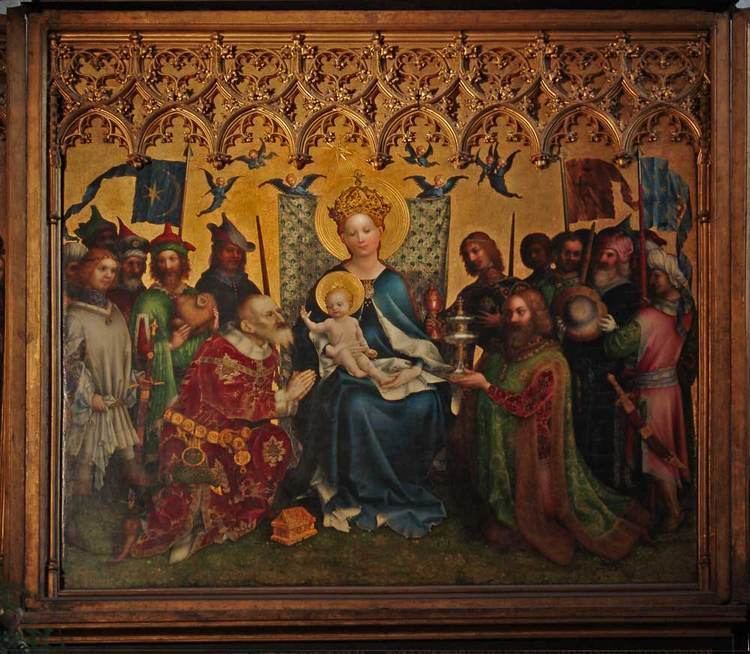 | ||
The term Cologne School of Painting was first applied in the 19th century to describe old German paintings generally. It subsequently came to refer more specifically to painters who had their workshops in medieval Cologne and the lower-Rhine region from about 1300 to 1550 (Clarke and Clarke 2001; Meyer 1902–13).
Contents
Style periods
Initially smaller altarpieces such as the Klaren Altar in the Cologne Cathedral from about 1360–70 were created, based on book paintings from around the year 1300 (Zehnder 1989, 32). The mid-15th century is the high-point of this school, when Stefan Lochner (active 1442–1451) created the Altar of the City Patrons, which is considered to be the greatest masterpiece of the Cologne School (Zehnder 1989, 61). A third creative period followed, under the influence of Netherlandish painters such as Rogier van der Weyden (Zehnder 1989, 69, 73). Rogier's influence is especially notable in the work of the outstanding representative of this final phase, the anonymous painter known as the Master of the Saint Bartholomew Altarpiece. For example, the latter's large Deposition of Christ resembles the same theme represented in the former's Escorial altarpiece, and the Master's heightened naturalism and emphasis on tear-stained features reflect Rogier's emotionalism (Richards 2001).
Painters of the Cologne School
The artists of the Cologne School include Stefan Lochner and William of Cologne, as well as a number of artists identified only by the works they created:
The Cologne artists' quarter
The Cologne painters worked mainly in the area of Old Cologne around the Schildergasse, the artists' quarter, where sign painters were also active (Schnorrenberg 1898).
